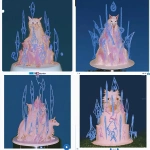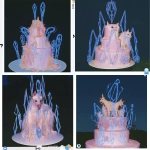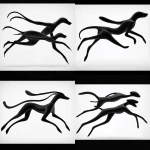Explore the Best AI Image Gallery

The 5G Revolution: Transforming Creativity and Connectivity
5G technology represents a significant leap in telecommunications, promising faster data transfer speeds, lower latency, and enhanced connectivity. As this technology continues to roll out globally, its impact on various sectors, particularly the creative industry, is becoming increasingly evident. In this post, we will explore the ramifications of 5G on creativity, potential uses, ethical considerations, and future trends.
Understanding 5G Technology
5G, or fifth-generation wireless technology, is designed to meet the growing demand for connectivity and bandwidth in today’s fast-paced world. With speeds expected to be up to 100 times faster than 4G, 5G can significantly enhance the way we stream, download, and share content. This remarkable technology is characterized by its ability to support a greater number of devices simultaneously and transmit data with greater reliability.
Impact on the Creative Industry
The creative industry, inclusive of areas such as art, design, music, and filmmaking, stands to benefit tremendously from the advancements brought by 5G technology. Here are some key areas where we expect substantial transformation:
- Enhanced Collaboration: Artists and creators can leverage high-speed internet to collaborate in real time, regardless of their geographical locations. This will promote a more diverse and innovative creative environment, allowing for global partnerships and projects.
- Virtual Reality (VR) and Augmented Reality (AR): With the lower latency of 5G, the use of VR and AR in creative projects can reach new heights. This can facilitate immersive experiences in galleries, live performances, and interactive installations, blurring the lines between reality and digital.
- Real-Time Streaming: Content creators can stream high-definition videos and interact with audiences live, fostering a new level of engagement. This can prove invaluable for musicians, podcasters, and visual artists wishing to disseminate their work instantly.
- Smart Devices and IoT: 5G can support a vast network of smart devices, enabling creative professionals to incorporate these technologies into their work, such as smart lighting in installations or IoT-enabled instruments in music performances.
Potential Uses of 5G in Creativity
As we look toward the future, several exciting potential uses for 5G in the creative sector come to mind:
- Interactive Art Installations: Artists can utilize 5G technology to create interactive art that involves audience participation. Live data feeds can influence the art experience in real time.
- Remote Creation: Creatives can work from virtually anywhere, with seamless access to high-quality tools and resources, minimizing the barriers of traditional studio setups.
- Enhanced Filmmaking: Filmmakers can use 5G to capture and transmit footage in real-time, allowing for more efficient production processes and immediate editing options.
Ethical Considerations
With any rapidly emerging technology, ethical considerations must be addressed. 5G technology may raise several important questions:
- Data Privacy: As increased connectivity allows for greater data collection, concerns regarding user privacy and data security become paramount. How are creators managing their audiences' data, and what safeguards are in place?
- Accessibility: The potential of 5G may widen the gap between those with access to high-speed internet and those without. Ensuring equitable access to 5G technology is essential to prevent marginalization of creative voices.
- Environmental Impact: The manufacturing and deployment of 5G infrastructure could have significant environmental effects. How can the creative industry advocate for sustainable practices in technology deployment?
Future Trends
Looking forward, the future of 5G technology in the creative industry promises to be dynamic and rich with potential. Here are some trends to watch for:
- Increased Integration of AI: As AI continues to evolve, we can expect seamless integration of AI tools in creative processes, supported by the speed and efficiency of 5G.
- Growth of Remote Collaboration Tools: In a post-pandemic world, the importance of remote collaboration tools will be amplified, with 5G enhancing the performance of these platforms.
- Metaverse Development: As the concept of the metaverse evolves, 5G technology will play a critical role in creating interconnected virtual experiences that enrich creativity and collaboration.
In summary, 5G technology stands to revolutionize the creative industry by facilitating enhanced collaboration, enabling immersive experiences, and fostering innovative uses in content creation. However, as we embrace this technological advancement, we must also address ethical concerns to ensure a fair and sustainable creative ecosystem. The future of creativity is bright, and 5G is paving the way for a truly connected world.


](https://images.ai-img.art/thumbnails/150/d8894e26ccb3647944df1b58cd702ee0f808a589c49cf840bdc180ef591d8b01.webp)











](https://images.ai-img.art/thumbnails/150/495da3d67f888cb2b29451be79caa418d737872bfbbc448175517c57d56faa70.webp)

](https://images.ai-img.art/thumbnails/150/f6821b2644e015cea7d1e826f8b3baf4c8c4698897d46869e6e61bcc59b070a3.webp)

















](https://images.ai-img.art/thumbnails/150/03913d58cd48bd2c88b0cabd5338b3a738d9b391a6bef375ae801221036f1642.webp)





](https://images.ai-img.art/thumbnails/150/beaaf2af72d3537d73c8c13d4ec66e4bd9510305c07f8730f4fff14fa5183be3.webp)

